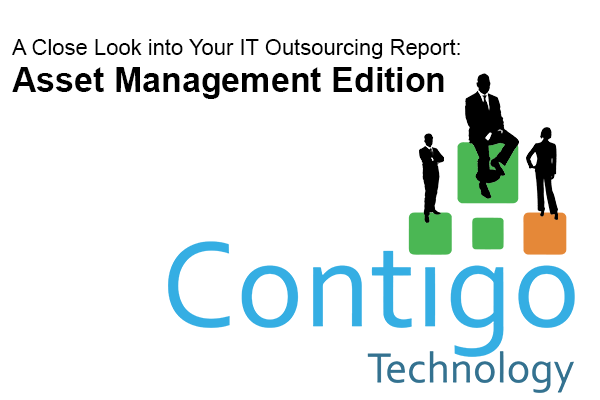
A Look Into Your IT Outsourcing Report: Asset Management Edition
By Eli Newman –
If your IT assets account for most of your company’s total assets, you’re not alone. In fact, this is the case for the majority of modern-day businesses. Because IT assets tend to be expensive to purchase and maintain, asset management plays an important role in ensuring that IT teams are using your enterprise’s resources as efficiently as possible. This helps organizations better support everyday business operations and the needs of users to yield more workplace productivity.
According to Gartner, the purpose of an IT outsourcing report for asset management is to provide “an accurate account of technology asset lifecycle costs and risks to maximize the business value of technology strategy, architecture, funding, contractual, and sourcing decisions.” This particular definition drives home the fact that IT asset management isn’t just about taking inventory of your assets. Instead, it involves utilizing the information that is captured to enable better decision making. Gone are the days when accuracy and large quantities of data were the only sources of value.
In addition to keeping tabs on all of your IT assets, there are a few other key objectives of IT asset management, which are listed below:
- Enforce compliance with industry-wide regulations and/or company policies
- Increase productivity by employing the right technology for your unique organization
- Lower support and licensing costs by eliminating underused resources
- Limit overhead costs associated with managing your IT environment
Now that you have a better understanding of why it’s important, let’s take a closer look at the three different types and some of the biggest advantages of IT asset management.
Types of Asset Management
When reading your IT outsourcing report, you might notice that there is a subsection for each asset management category, which are described below.
IT Asset Management
IT asset management is an umbrella term that refers to the set of business practices that connect contractual, financial, and inventory functions to improve strategic decision making when it comes to IT.
Digital Asset Management
Digital asset management deals directly with intellectual property in the form of electronic media (such as videos, photos, and certain types of digital data).
Software Asset & License Management
Software asset and license management deals with the effective control, protection, and management of software assets. Concerned with software produced by the company and software that is licensed from third parties, the purpose of this type of asset management is to make sure that all of the software that an enterprise uses is in compliance with licensing agreements and is properly paid for.
The Benefits of IT Asset Management
While effective asset management does help business leaders and managers make better informed decisions, there are several other advantages of tracking your IT assets. This includes:
- A Reduction in Total Cost of Ownership. The cost of an IT asset goes far beyond the amount that was originally paid to acquire it. For an IT asset to create value, it must be maintained, used, and supported throughout its lifecycle. Asset management helps you keep your total cost of ownership (TCO) at bay by measuring the entire cost of owning and operating your IT assets so that you can eliminate costs from duplicated or underutilized assets.
- License & Subscription Compliance. Noncompliance is both a legal and financial risk to companies. Asset management enables organizations to track digital assets like cloud subscriptions and software licenses to prevent overspending on resources that aren’t being used.
- Business Continuity. Outages and disasters happen. IT asset data can be a valuable factor in building IT architectures that are redundant, resulting in a more resilient system in the wake of a crisis.
Clearly, there is a lot to gain by implementing a strong asset management strategy. That said, due to the ever-changing nature of technology, not every business is equipped to constantly keep up with all of their IT assets. If your organization struggles to keep track of some of its most valuable assets, Contigo can help. Our IT outsourcing report services help you document everything from asset management to end user activity to IT budgeting. Contact us to learn more about how we can provide you with better insight into your IT assets and more today.